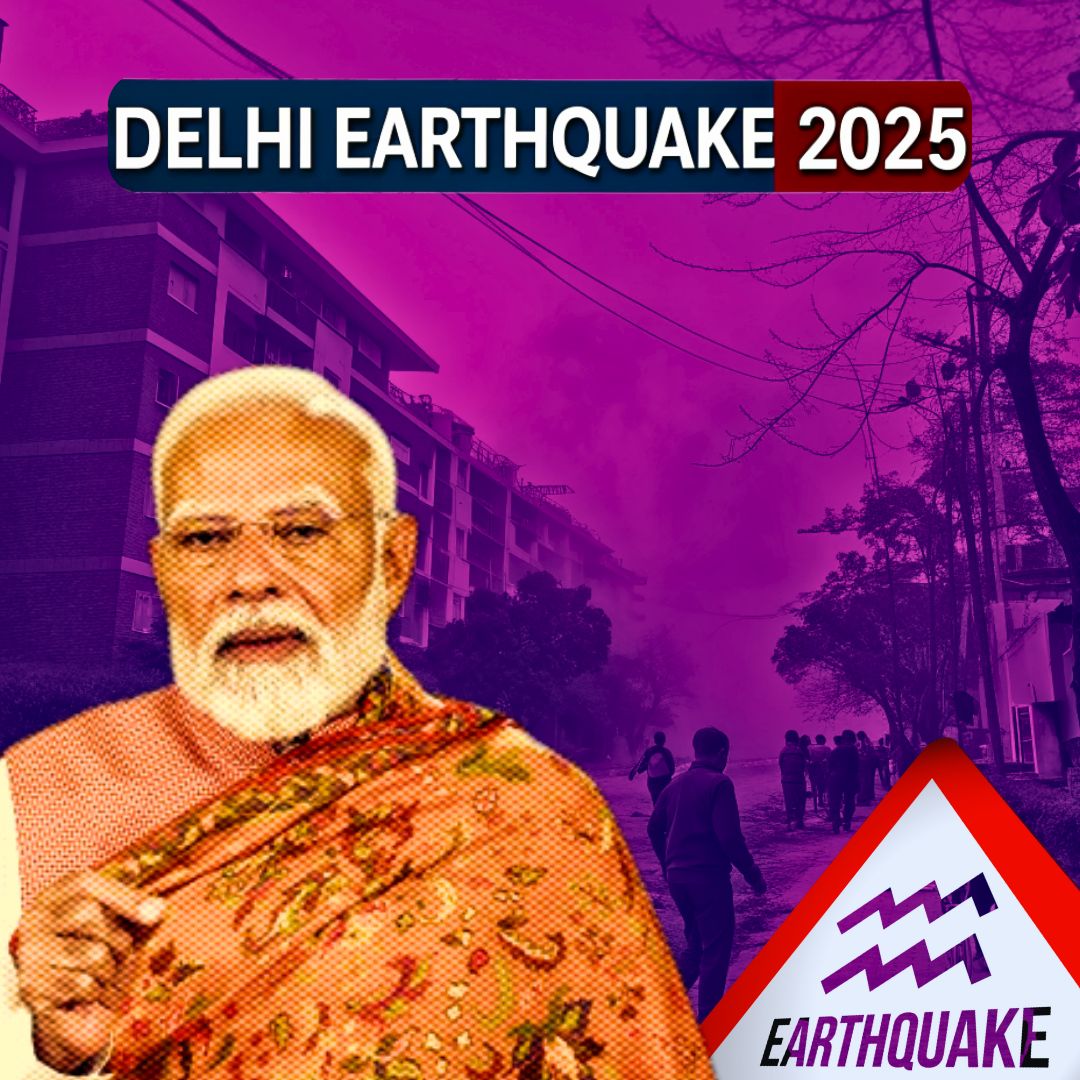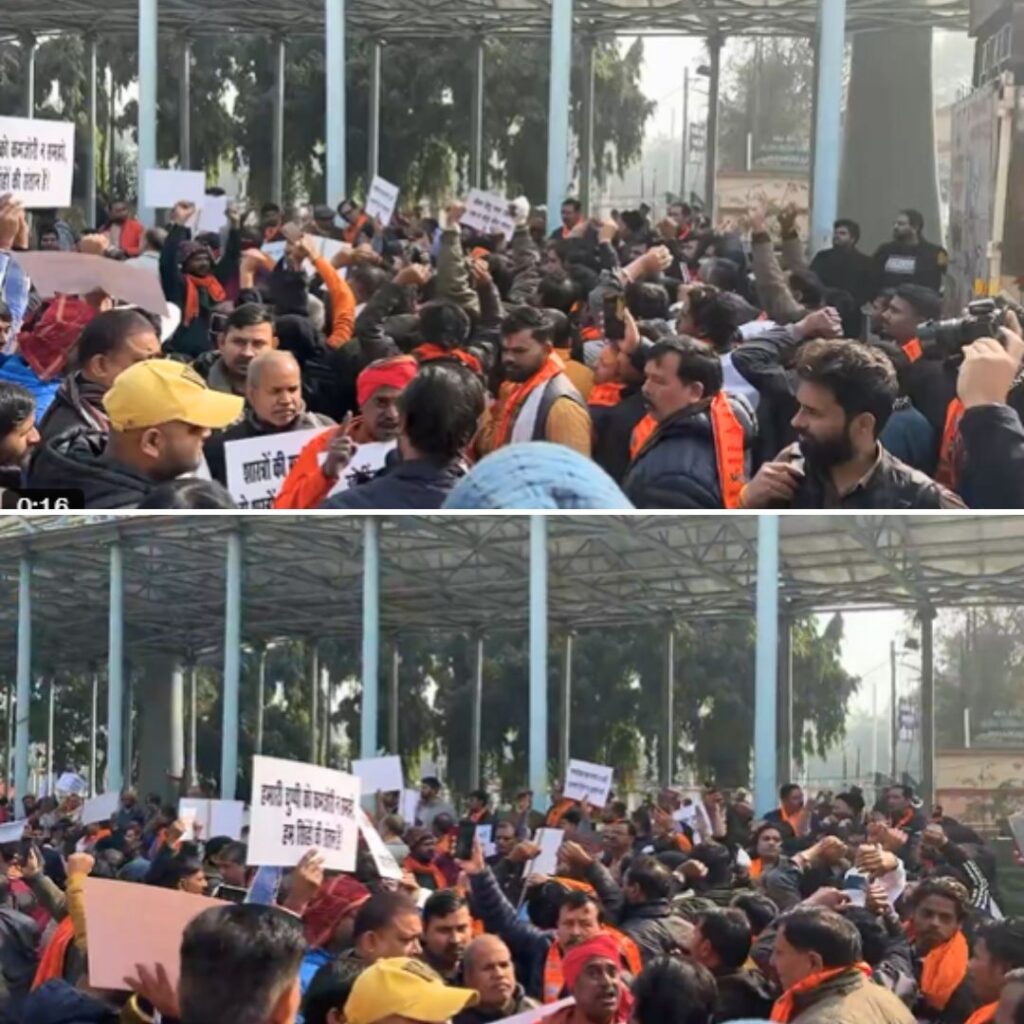A 4.0 magnitude earthquake struck New Delhi on February 17, 2025, at 05:36:55 IST, with tremors felt across the Delhi-NCR region. The quake, originating at a shallow depth of 5 km, caused residents to awaken in alarm, although no immediate damage or injuries were reported.
Officials from the National Center for Seismology confirmed the details, and Prime Minister Narendra Modi urged people to stay calm and provided reassurance.
Details of the Earthquake
The earthquake’s epicentre was pinpointed near Durgabai Deshmukh College of Special Education in Dhaula Kuan. The tremors reverberated across North India, sending shockwaves through densely populated areas. Residents recounted moments of sheer panic as their homes shook, with many choosing to evacuate buildings in search of safety. “I felt my entire apartment swaying,” shared one resident from Gurugram, “It was terrifying. I grabbed my children and ran outside.” The Delhi Police promptly utilized social media to disseminate calm and advise citizens to report any emergencies via their designated helpline. Emergency services were immediately placed on high alert, poised to respond to any incidents that might arise.
An earthquake with a magnitude of 4.0 on the Richter Scale hit New Delhi at 05:36:55 IST today
— ANI (@ANI) February 17, 2025
(Source – National Center for Seismology) pic.twitter.com/KXIw8qRO6T
PM Modi’s Reassurance and Call for Calm
Prime Minister Narendra Modi responded swiftly to the event, taking to X (formerly Twitter) to address the nation. He emphasized the importance of maintaining calm and adhering to established safety protocols. His tweet resonated widely: “Tremors were felt in Delhi and nearby areas. Urging everyone to stay calm and follow safety precautions, staying alert for possible aftershocks. Authorities are keeping a close watch on the situation and are prepared to provide all necessary assistance. Safety and well-being of citizens is our top priority.” This message aimed to provide reassurance and instil confidence in the government’s preparedness.
Tremors were felt in Delhi and nearby areas. Urging everyone to stay calm and follow safety precautions, staying alert for possible aftershocks. Authorities are keeping a close watch on the situation.
— Narendra Modi (@narendramodi) February 17, 2025
Public Reaction and Social Media Echoes
The earthquake served as a catalyst for extensive discussions across social media platforms. Citizens shared their firsthand accounts and offered support to those who felt the tremors. Memes and humorous takes also emerged, reflecting a coping mechanism in the face of anxiety. A trending hashtag, #DelhiQuake2025, became a hub for information sharing and community interaction. However, amidst the light-hearted banter, serious discussions on preparedness and infrastructure resilience also gained traction. Influencers and public figures played their part by sharing safety guidelines and amplifying official advisories.
दिल्ली में भूकंप का ये वीडियो देखिए…
— Vinay Saxena (@vinaysaxenaj) February 17, 2025
ये एक घर के बाहर CCTV कैमरे की रिकॉर्डिंग है। #earthquake #earthquakeindelhi #earthquakes #earthquakedelhincr #भूकंप #delhi #noida pic.twitter.com/YUOeUG1Gwu
Background Context: Delhi’s Seismic Vulnerability
Delhi’s geographical location renders it susceptible to seismic activity, primarily due to its proximity to the Himalayas, a region known for frequent tectonic movements. The city’s vulnerability is compounded by its high population density and the prevalence of structures not fully compliant with earthquake-resistant building codes. Experts caution that a larger magnitude earthquake could have devastating consequences, underscoring the urgency of implementing stricter construction regulations and retrofitting vulnerable buildings. It’s worth noting that Delhi has experienced several minor tremors in recent years, serving as reminders of the ever-present risk.
Expert Insights and Scientific Perspective
Seismologists at the National Center for Seismology have been closely monitoring the region’s seismic activity. They explained that while the 4.0 magnitude quake was relatively mild, its shallow depth amplified its impact, causing more intense shaking in the immediate vicinity. “Shallow earthquakes tend to produce stronger ground motions than deeper ones of the same magnitude,” clarified Dr. Sharma, a leading seismologist. “This is why even a moderate quake can be felt so strongly.” The NCS has installed additional monitoring stations in and around Delhi to improve early warning capabilities and gather more accurate data.
Preparedness Measures and Official Statements
Government officials have reaffirmed their commitment to enhancing disaster preparedness and resilience. A spokesperson from the National Disaster Management Authority (NDMA) highlighted ongoing initiatives to educate citizens about earthquake safety measures and emergency response procedures. “We are working closely with local authorities to conduct mock drills and awareness campaigns,” the spokesperson stated. “It is crucial for every citizen to know what to do in the event of an earthquake.” Additionally, the NDMA is collaborating with urban planning agencies to incorporate seismic considerations into building codes and infrastructure development.
The Logical Indian’s Perspective
At The Logical Indian, we believe in the power of informed communities and the importance of proactive disaster preparedness. The recent earthquake serves as a stark reminder of the need for collective action to safeguard lives and property. We urge our readers to engage in constructive dialogue, share their experiences, and take concrete steps to enhance their personal and community resilience. Empathy, kindness, and collaboration are essential in navigating such challenges. We stand in solidarity with those affected and remain committed to promoting a culture of safety and awareness.
We invite our readers to contribute to this critical conversation. Share your experiences during the earthquake, offer preparedness tips, or suggest ways to improve community resilience. How can we work together to create a safer and more resilient Delhi-NCR region? Let your voice be heard and help us foster a culture of preparedness and compassion. Join the conversation below and be part of the solution.












